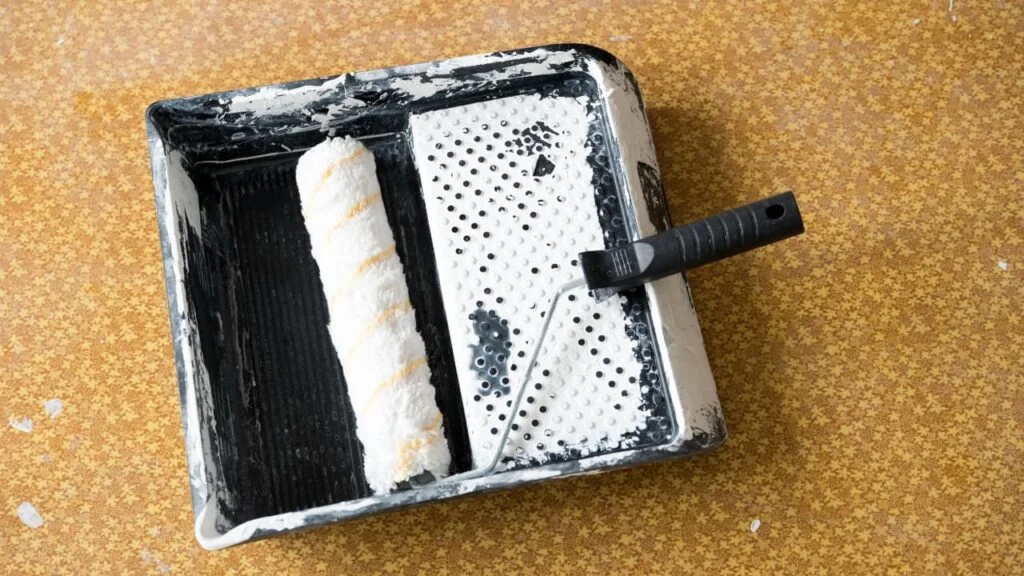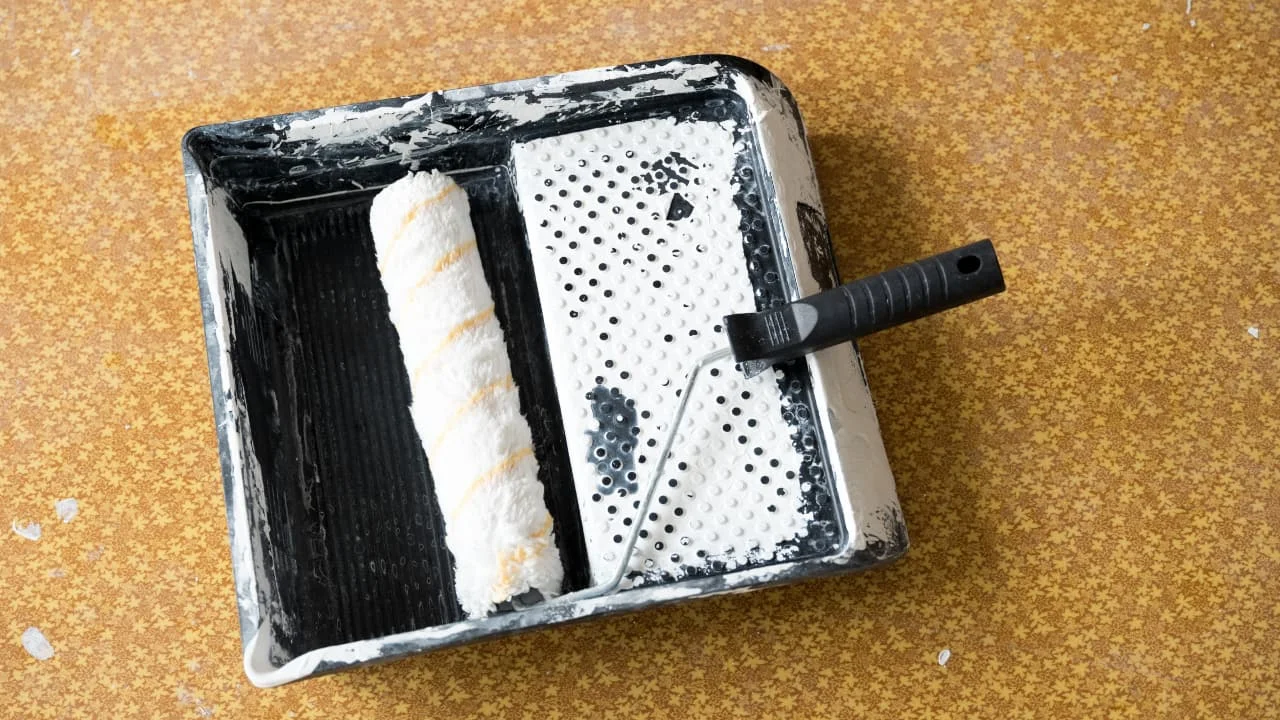An Overview Of Painting Linoleum Flooring
Are you tired of looking at your old linoleum flooring and considering a change? Before you break the bank on an expensive renovation, consider this: Can you paint linoleum floors? The answer might surprise you.
In this comprehensive guide, we will explore everything from the nature of linoleum flooring to painting techniques and maintenance tips that can breathe new life into your dated, worn-out surfaces.
Say goodbye to outdated floors and hello to budget-friendly transformations.
Key Takeaways
- Linoleum flooring is a durable and eco-friendly material made from natural ingredients like linseed oil, cork dust, wood flour, and limestone powder.
- Yes, you can paint linoleum floors with the right preparation and materials. Recommended paints are epoxy, porch & floor enamel, and acrylic latex paints.
- Painting your linoleum floors presents numerous benefits that make it a worthwhile investment. However, it also has drawbacks such as chipping or peeling if not done correctly.
- Proper care and maintenance are critical to prolonging the lifespan of painted floors. Use gentle cleaning materials and avoid harsh chemicals while inspecting periodically for signs of damage.
Table of Contents

Understanding Linoleum Flooring
Linoleum flooring is a resilient and eco-friendly material made from natural ingredients such as linseed oil, cork dust, and wood flour.
Definition Of Linoleum Flooring
Linoleum flooring is a durable, eco-friendly material composed of natural ingredients like linseed oil, cork dust, wood flour, and limestone powder.
It’s often mistakenly referred to as vinyl flooring due to its similar appearance, but the two are different in terms of their composition and characteristics.
Although once considered outdated due to the rise of synthetic alternatives like vinyl in the 1950s and ’60s, this environmentally friendly option has experienced a resurgence in recent years among homeowners seeking sustainable solutions for their DIY home improvement projects.
Features And Benefits Of Linoleum Flooring
Linoleum flooring is a versatile and durable option for homeowners who desire an eco-friendly and budget-friendly option that provides longevity. Linoleum is made of natural materials such as linseed oil, cork dust, wood flour, and rosin to create the ideal surface perfect for high-traffic areas like kitchens and hallways.
It comes in different colors, patterns, and designs suitable for various home décor styles.
One significant benefit of linoleum flooring is its durability; With proper care and maintenance like regular cleaning using non-abrasive substances like vinegar solutions or water with mild detergent will prolong the life span of your linoleum floors without losing their luster or shine.
Another advantage of choosing linoleum flooring over other options includes its affordability while retaining quality comparable with premium vinyl floors hence giving you a cost-effective yet long-term solution.
Can You Paint Linoleum Floors?
Yes, you can paint linoleum floors with the right preparation and materials. Read on to learn about the factors to consider before painting, step-by-step instructions for a successful kitchen floor project, recommended paint types, and more.
Factors To Consider Before Painting
Before painting your linoleum floors, there are several factors you need to consider. Firstly, assess the condition of your current flooring – is it in good shape or does it have cracks and chips? Painting over damaged surfaces can lead to unsatisfactory results.
Secondly, think about the amount of wear and tear that your floors experience on a daily basis. High-traffic areas may require more durable paint or additional layers for longevity.
Additionally, take note of the room’s humidity levels as they can affect the drying process and cause paint to peel off prematurely.
In conclusion, carefully evaluating these factors before starting any DIY project will save you time and money in the long run.
Steps For Preparation And Painting
To successfully paint vinyl or linoleum floors, you need to follow some essential steps carefully. The first step is cleaning the surface thoroughly and removing any dirt or debris that could interfere with the paint’s adhesion.
You can use a mixture of water and vinegar for this purpose or opt for a commercial degreaser.
Once your linoleum or vinyl flooring is clean and dry, start applying painter’s tape around edges such as walls and baseboards to prevent paint from smudging onto adjacent surfaces.
Before painting your linoleum floor, apply a suitable primer product designed explicitly for this type of surface. Give enough time for it to dry completely based on manufacturer instructions before moving on to apply a second coat or two coats of paint using high-quality brushes or rollers specifically recommended by your chosen paint brand.
In conclusion, proper preparation is critical when painting vinyl or linoleum floors because it helps ensure long-lasting durability and excellent results.
Recommended Paint Types For Linoleum Floors
When it comes to painting linoleum floors, choosing the right paint type is crucial for achieving a durable and long-lasting finish. Epoxy paints are highly recommended for their excellent adhesion and resistance to scratches and chemicals.
They also come in various colors, finishes, and textures to suit different design preferences. Another great option is porch paint and floor enamel, which is specifically formulated for high-traffic areas like kitchens, bathrooms, and entryways.
Acrylic latex paints are also suitable for linoleum floors as they dry quickly, are low odor, easy to clean up with water, and have good adhesion properties. However, they may not be as durable as epoxy or enamel paints if used in heavy traffic areas or exposed to moisture regularly.
In summary: For optimal results when painting linoleum floors go for epoxy paints – highly resistant to scratches & chemicals; Porch & floor enamel – offers excellent durability, especially in high traffic areas; Acrylic Latex Paints offer low odors but less durable than epoxy/enamel points The most important thing when selecting what kind of paint type suits best your desired output about Linoleum flooring its essential always check the compatibility between your chosen product against the current state of your flooring surface through proper preparation techniques beforehand.
Pros And Cons Of Painting Linoleum Floors
Painting linoleum floors has its benefits, such as allowing you to give new life to old flooring and creating a unique design. However, it also has drawbacks, including the possibility of chipping and peeling if not done correctly.
Learn more about the advantages and disadvantages of painting linoleum floors in this section.
Benefits Of Painting Linoleum Floors
Painting your linoleum floors presents numerous benefits that make it a worthwhile investment. One of the most significant advantages is that you can change the appearance of your flooring without having to replace it entirely, which can be costly and time-consuming.
With new paint colors, stencils, and design options available, you have the freedom to create a unique look that complements your home decor.
Overall, opting for a DIY floor painting project can be budget-friendly compared to other types of floor renovations. Unlike installing new tiles or hardwood floors that require professional help, you won’t need extensive equipment or skills beyond simple surface preparation techniques and basic paint application abilities.
Drawbacks Of Painting Linoleum Floors
While painting linoleum floors can be a cost-effective and creative way to revamp your home’s interior, it does come with some drawbacks. One of the primary issues is that paint may not adhere as well to the surface of painted linoleum flooring compared to other materials, resulting in peeling or chipping over time.
Additionally, painted linoleum floors may require more upkeep and maintenance than their original counterparts, which can be time-consuming and costly in the long run.
In some cases, the application of paint may also affect the durability of your vinyl flooring’s wear layer, making it more prone to scratches or scuffs from daily foot traffic.
Maintaining Painted Linoleum Floors
To properly maintain painted linoleum floors, avoid using abrasive cleaning materials and stick to gentle cleansers, sweep or vacuum often to prevent dirt buildup, and consider adding a protective sealant over the paint for added durability.
Tips For Proper Maintenance
Proper maintenance is essential for prolonging the life and maintaining the appearance of your painted linoleum floors. First, ensure that you clean your floors regularly with a soft-bristled brush or vacuum to remove any dirt or debris that could cause abrasions.
Avoid harsh cleaning materials such as ammonia-based cleaners, bleach, or abrasive tools like steel wool as they can damage the paint finish.
For high-traffic areas prone to wear and tear such as entryways and hallways, place rugs or mats on the bathroom floor to protect them from excessive friction. Also, avoid exposing painted linoleum floors to direct sunlight for extended periods because it can fade color over time.
By following these simple tips for proper maintenance of painted linoleum flooring, you’ll be able to keep your floors looking great and extend their lifespan significantly while avoiding costly repairs in the long run.
Avoiding Abrasive Cleaning Materials
Once you have painted your linoleum floors, it is essential to take proper care of them to extend their lifespan and maintain their appearance. One way to achieve this is by avoiding the use of abrasive cleaning materials that can damage the surface.
Instead, use a soft-bristled broom or vacuum cleaner to remove dust and debris regularly.
Avoid using harsh chemicals like bleach or ammonia-based products as they may cause discoloration or fading of the paint finish over time. Also, avoid scrubbing the floor vigorously with abrasive tools such as steel wool pads or scouring powders that can scratch the surface.
How To Prolong The Life Of Painted Linoleum Floors
Prolonging the life of painted linoleum floors is crucial to ensure their durability and longevity. Proper maintenance and care can help keep them looking new and fresh for years to come.
Firstly, avoid using abrasive cleaning materials such as scouring pads or steel wool that can scratch or damage the surface of your very new flooring. Instead, use a soft-bristle broom or vacuum cleaner to remove dirt and debris regularly.
Secondly, protect your painted linoleum floors from excess moisture by wiping away any spills promptly.
Lastly, consider applying an additional protective coat on top of the existing paint every few years to maintain its shine and protection against wear and tear.
Conclusion: The Advantages Of Painting Linoleum Floors And The Importance Of Proper Care And Maintenance
In conclusion, painting linoleum flooring is a cost-effective and creative way to upgrade your home’s interior design. With the right preparation and painting techniques, you can transform old and outdated floors into stunning focal points.
However, it’s essential to consider the pros and cons of painting linoleum floors before embarking on this DIY project. Proper care and maintenance are critical to prolonging the lifespan of painted floors, so make sure to use gentle cleaning materials and avoid harsh chemicals.
FAQs:
Can linoleum flooring be painted over?
Yes, it is possible to paint linoleum flooring. This can be a cost-effective way to update the look of your floors without having to replace them completely.
What do I need to do before painting my linoleum floors?
Before painting, you should thoroughly clean and prime your floors with appropriate products in order to ensure that the new top coat of paint will adhere properly. Additionally, any damaged or loose areas should be repaired prior to painting.
What type of paint works best for linoleum floors?
Specialty paints designed for use on concrete and garage surfaces are typically the most effective choice for painting floors and linoleum as they offer both durability and resistance against wear and tear from foot traffic.
How long will painted linoleum last?
The longevity of linoleum floor paint depends on several factors such as frequency of use, quality of products used during prep work as well as overall care/maintenance efforts put forth by homeowners over time but generally speaking – professionally done jobs may last 5-10 years if properly maintained & cared for whereas DIY projects may need refreshing after just a few years depending upon traffic levels within given space.

